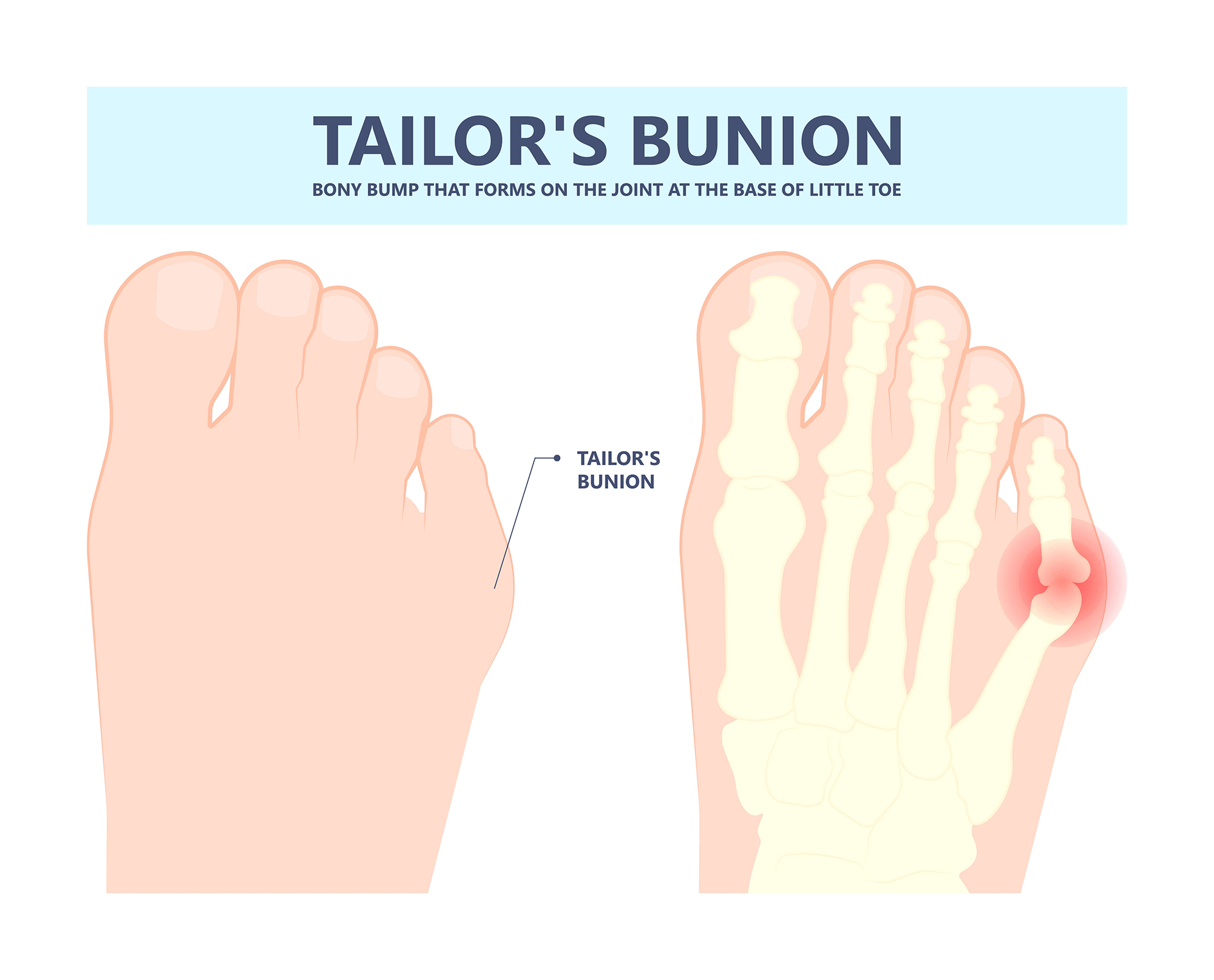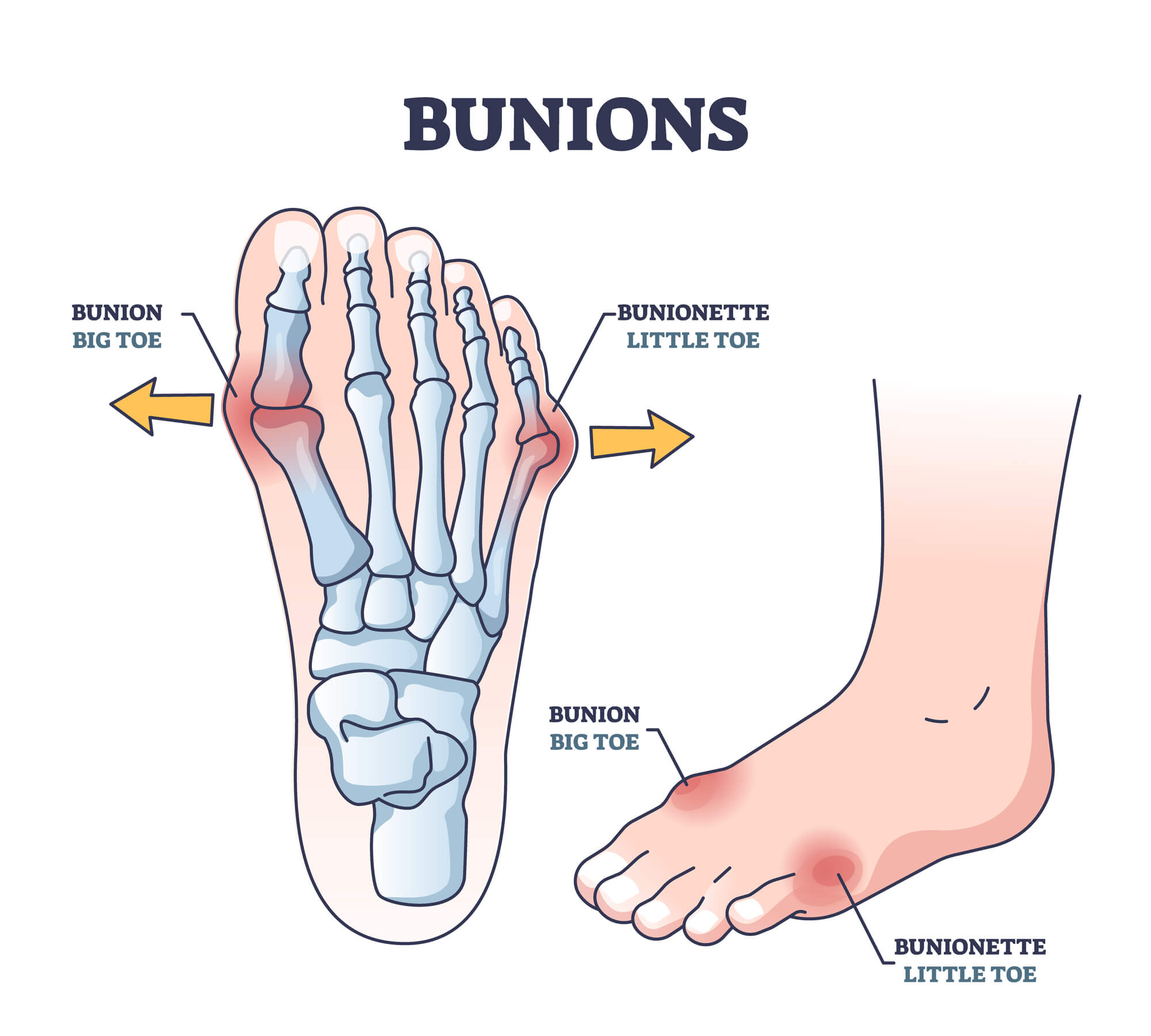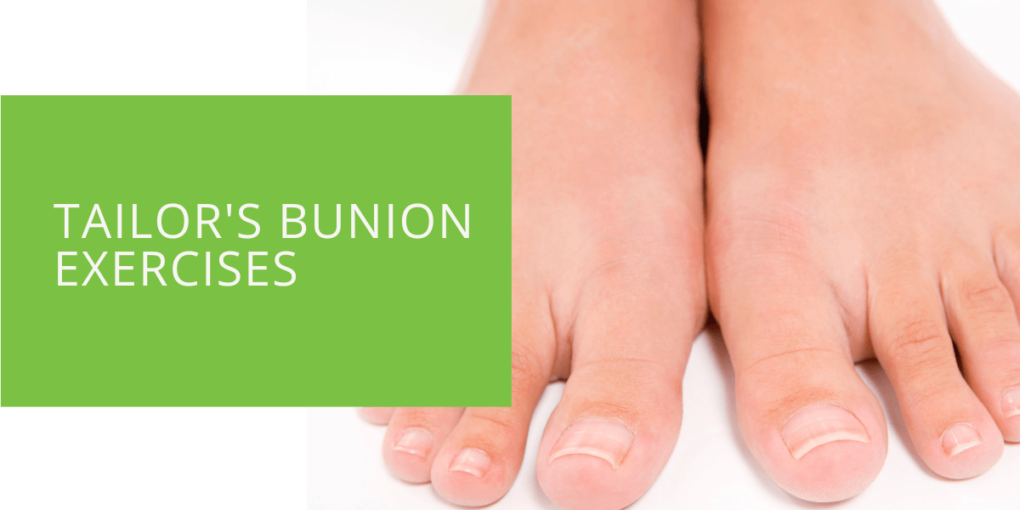Tailor’s Bunion Exercises
If you're experiencing discomfort on the side of your foot, specifically near the little toe, you might be dealing with a condition known as a tailor's bunion or bunionette. This bony deformity can cause pain and inflammation and hinder your daily activities. Fortunately, tailor's bunion exercises can help relieve the discomfort and improve the health of your feet. In this article, we will explore the benefits of exercise for tailor's bunions and provide you with a range of exercises to incorporate into your foot care routine.
Understanding Tailor's Bunion
A tailor's bunion is a foot condition that affects the fifth metatarsal head, causing a prominence on the outside of the foot near the base of the little toe. It is often a result of genetic factors, abnormal foot mechanics, or wearing ill-fitting shoes that put excessive pressure on the foot's forefoot area. Common symptoms include pain, swelling, redness, and difficulty wearing shoes comfortably.
Benefits of Exercise for Tailor's Bunion
Regular exercise is crucial for managing tailor's bunions and promoting foot health. Incorporating targeted exercises into your routine offers a range of benefits, including:
1. Pain Relief
Tailor's bunions often cause discomfort, pain, and inflammation. Exercise helps alleviate these symptoms by improving blood circulation to the affected area, reducing inflammation, and releasing endorphins, natural pain-relieving chemicals. By strengthening the muscles and ligaments surrounding the bunion, exercise provides support and stability, decreasing pressure on the affected joint and reducing pain.
2. Improved Flexibility and Range of Motion
Tailor's bunions can restrict the affected joint's flexibility and range of motion. Performing exercises that target the toes, foot arch, and surrounding muscles helps enhance flexibility and restore normal movement. You can increase the joint's mobility by stretching and strengthening these areas, allowing for better foot function and reducing discomfort.
3. Enhanced Muscle Strength
Exercising the muscles in your feet and toes helps improve their strength and stability. Stronger muscles provide better support to the affected joint, helping prevent further deformity and reducing the risk of complications. Strengthening the surrounding muscles also aids in maintaining proper alignment, relieving pressure on the bunion, and promoting overall foot health.
4. Correction of Foot Mechanics
Tailor's bunions can result from abnormal foot mechanics, such as overpronation (inward rolling of the foot). Targeted exercises can help correct these imbalances by strengthening specific muscles and improving foot alignment. By addressing these underlying issues, exercise is crucial in preventing the progression of tailor's bunions and reducing associated pain.
5. Prevention of Future Complications
Regular exercise for tailor's bunions provides immediate relief and contributes to long-term foot health. By improving foot strength, flexibility, and mechanics, exercise helps prevent the development of other foot problems, such as plantar fasciitis, metatarsalgia, and other forms of foot deformities. It promotes optimal foot function, reducing the risk of future complications and enhancing overall well-being.

Recommended Tailor's Bunion Exercises
1. Toe Abductor Stretch
This exercise targets the muscles responsible for the abduction and helps improve flexibility. Here's how to perform it:
- Sit comfortably on a chair with your feet flat on the floor.
- Cross your affected foot over your opposite knee.
- Use your hand to pull the little toe away from the other toes gently.
- Hold the stretch for 15-30 seconds.
- Repeat the stretch 3-5 times on each foot.
2. Toe Curls with Towel
This exercise focuses on strengthening the muscles in the feet and toes. Follow these steps:
- Place a small towel on the floor in front of you.
- Stand barefoot with your feet shoulder-width apart.
- Use your toes to scrunch and grab the towel, pulling it toward you.
- Release the towel and repeat the movement for 10-15 repetitions.
- Perform 2-3 sets.
3. Big Toe Extension
Stretching and strengthening the big toe is essential for relieving the tailor's bunion pain. Try this exercise:
- Sit on a chair and place your affected foot on the opposite knee.
- Use your hand to hold the base of your big toe.
- Gently pull your big toe upward, away from the foot.
- Hold the stretch for 15-30 seconds.
- Repeat the stretch 3-5 times on each foot.
4. Golf Ball Roll
This exercise helps massage and stimulate the soft tissues in the affected area. Here's how to do it:
- Sit on a chair and place a golf ball on the floor.
- Position your affected foot on top of the golf ball.
- Apply gentle pressure and roll the ball back and forth using your foot.
- Continue for 1-2 minutes, focusing on the tender areas.
- Repeat with the other foot.
5. Arch Strengthening
Strong arches provide better support and stability to the foot. Try these exercises to strengthen your arches and improve overall foot health:
- Arch Raises: Stand barefoot with your feet hip-width apart. Slowly lift your arches by pressing your toes into the ground while keeping your heels grounded. Hold for a few seconds and release. Repeat 10-15 times for each foot.
- Toe Spreading: Sit comfortably and place your feet flat on the floor. Spread your toes apart as much as possible, creating a fan-like shape. Hold for a few seconds and relax. Repeat 10-15 times.
- Marble Pickup: Place a small bowl of marbles on the floor before you. Pick up each marble with your bare feet and place it in another bowl. Repeat until all marbles have been moved. This exercise helps strengthen the intrinsic muscles of your feet.

Additional Tips for Tailor's Bunion Care
In addition to tailor's bunion exercises, implementing the following tips can further alleviate discomfort and promote foot health:
- Choose Proper Footwear: Opt for shoes with a wide toe box that allows your toes to move freely. Avoid high heels and narrow shoes that can exacerbate the condition.
- Consider Orthotic Devices: Custom orthotics or over-the-counter arch supports can provide additional support and help correct foot alignment, reducing pressure on the affected area.
- Take Breaks and Rest: If your work requires prolonged standing or walking, take regular breaks to give your feet some rest. Elevating your feet can also help reduce swelling and discomfort.
- Apply Ice and Use Pain Relievers: Ice packs to the affected area can help reduce inflammation and pain. Over-the-counter nonsteroidal anti-inflammatory drugs (NSAIDs) can provide temporary relief, but consult a healthcare professional before using them.
Conclusion
Tailor's bunion exercises and proper footwear and care can significantly improve your comfort levels and foot health. Regularly perform these exercises and consult a podiatrist or foot specialist for personalized guidance. Taking proactive steps to manage tailor's bunions can alleviate pain, reduce inflammation, and enhance your overall well-being. Don't let foot discomfort hold you back; take charge of your foot health today!

